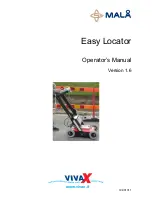
Section 5--General Theory of Operation
5.2
patrol speed from the combined speed (120 - 55 = 65). The
PATROL display would indicate 55 and the TARGET
display would indicate 65.
5.1.
Microwave RF Emissions
Traffic radar operators may have some questions about the
biological effects of exposure to the microwave energy
produced by the radar devices. According to all credible
evidence, the emission levels resulting from traffic radar use
pose no threat whatsoever, either to the radar operator or to
target vehicle occupants.
One widely recognized authority for safe limits of
nonionizing radiation exposure is the American National
Standards Institute, which recommends maximum exposure
levels for the frequencies on which Kustom traffic radar
systems operate (ANSI/IEEE C95.1-1999, "Standard for
Safety Levels With Respect to Human Exposure to Radio
Frequency Electromagnetic Fields, 3 kHz to 300 GHz").
These exposure levels, expressed in terms of power density
are 10 mW/cm
2
for K-band and Ka-Band radar units.
Similarly, the Occupational Safety and Health
Administration (OSHA), a division of the U.S. Department
of Labor, recommends a 10 mW/cm
2
exposure limit for all
three frequency bands ("Radiation Protection Guide", 29
CFR, Chapter XVII, Subpart G, Part 1910.97). This limit is
clearly accepted by most reputable scientific and medical
authorities.
Kustom radar systems utilize microwave transmitters which
produce aperture power densities, measured directly at the
face of the antenna, in the range of approximately 0.3 to 2.3
mW/cm
2
. Typical levels for the vast majority of units are in
the 0.4 to 1.0 mW/cm
2
range, which is but a small fraction
of the recognized safe limits. Bear in mind that these are
level measurements taken directly in the main beam of the
antenna, and that the power densities produced at the sides
and rear of the unit are typically at least one hundred times
lower than in the main beam.
















































